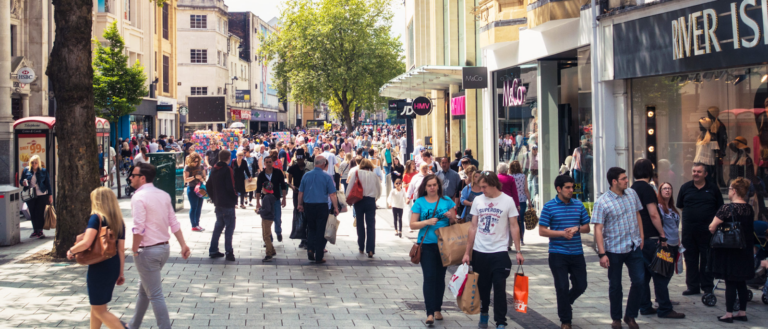Urban Walkability: Why It Matters and How to Make It Safe

Walkability has emerged as an important factor in creating vibrant, sustainable, and livable cities. As Toronto and other metropolitan areas face increasing congestion, pollution, and public health challenges, the ability for residents to safely and comfortably travel on foot has never been more important. This post explores the multifaceted benefits of walkable cities and highlights how proper infrastructure, including protective measures like bollards, can transform urban spaces into pedestrian-friendly environments.
What Is Walkability?
Walkability refers to how favorable an area is to walking – not just for recreation, but as a practical means of transportation for daily activities. A truly walkable neighborhood allows residents to access essential services, employment, education, and leisure activities primarily on foot, reducing car dependency and fostering community connection.
Key elements of walkable communities include:
Connectivity: Well-connected street networks with short blocks and minimal dead-ends.
Density: Sufficient population density to support local businesses and services.
Mixed-use development: Blending residential, commercial, and recreational spaces.
Pedestrian infrastructure: Quality sidewalks, crosswalks, and pedestrian paths.
Safety measures: Traffic calming features, proper lighting, and protective barriers, such as bollards.
Aesthetic appeal: Green spaces, public art, and attractive streetscapes.
The Compelling Benefits of Walkable Cities
Environmental Sustainability
Poor air quality is a significant public health concern in Canada, particularly in southern Ontario. Air pollution has been clearly associated with increases in a broad range of acute health impacts and in chronic respiratory and cardiovascular diseases. The Canadian Medical Association has estimated that air pollution costs Canadians about $8 billion per year in health-related costs (CMA, 2008). Toronto Public Health has estimated that air pollution contributes to 1,700 non traumatic deaths and 6,000 hospital admissions each year in Toronto. More than one quarter of those health impacts have been attributed to traffic-related air pollution).
Economic Advantages
Walkable neighborhoods consistently demonstrate stronger economic vitality through multiple measures. According to a study by the Brookings Institution, commercial properties in pedestrian-friendly districts typically command 7-30% higher rental rates compared to car-dependent areas. Local businesses in walkable communities often report increased foot traffic, with pedestrians more likely to make spontaneous purchases than drivers passing through.
In Toronto specifically, Business Improvement Areas (BIAs) that have invested in pedestrian infrastructure have seen significant increases in retail occupancy rates and customer dwell time. The economic impact extends beyond retail, as walkable neighborhoods tend to have lower municipal service costs per capita due to more efficient use of infrastructure.
Public Health Improvements
Regular walking is associated with reduced rates of obesity, heart disease, diabetes, and mental health issues. Cities that prioritize walkability effectively make physical activity an effortless part of daily life rather than an additional task requiring special time and effort. The health care cost savings alone provide compelling justification for walkability investments.
Social Cohesion and Community Building
Perhaps one of the most underappreciated benefits of walkable communities is how they foster social connections. When people travel on foot, spontaneous interactions occur that simply don’t happen inside private vehicles. These chance encounters build community fabric and contribute to a sense of belonging and security.
The Critical Safety Element in Walkable Communities
While the benefits of walkability are clear, these advantages can only be realized when pedestrian safety is prioritized. Unfortunately, many urban areas remain dangerous for pedestrians, with vehicle-pedestrian collisions representing a significant public health concern.
The Pedestrian Safety Challenge
In Toronto alone, there were 29 pedestrian deaths in 2023.Similar statistics plague cities worldwide, highlighting the urgent need for comprehensive pedestrian safety measures. Without addressing safety concerns, efforts to promote walking will fall short.
Creating Physical Separation with Bollards
One of the most effective methods for enhancing pedestrian safety is the strategic implementation of protective bollards. These sturdy and strong vertical posts create crucial separation between vehicle traffic and pedestrian spaces, providing both physical protection and psychological comfort for those who choose to walk.
Beyond Bollards: Comprehensive Safety Approaches
While bollards represent a critical component of pedestrian safety infrastructure, they work best as part of an integrated approach that includes:
Improved crosswalk visibility: High-contrast markings, flashing beacons, and raised crossings.
Expanded sidewalk networks: Continuous, well-maintained walking paths throughout urban areas.
Traffic calming measures: Speed humps, chicanes, and road narrowing to reduce vehicle speeds.
Enhanced lighting: Proper illumination of pedestrian areas, especially at crossings.
Smart intersection design: Pedestrian-friendly signal timing and refuge islands at complex crossings.
Implementing Walkability: Success Stories
Cities worldwide have demonstrated that intentional walkability improvements yield significant returns. Barcelona’s “superblock” model reclaims street space from cars for pedestrians. Tokyo’s network of pedestrian-only shopping streets creates vibrant commercial zones safe from vehicle traffic.
Common among these success stories is the strategic use of physical barriers like bollards to create safe pedestrian environments without completely eliminating necessary vehicle access for deliveries, maintenance, and emergency services.
The Path Forward: Making Your Community More Walkable
Whether you’re a property manager, business owner, or community advocate, there are practical steps you can take to enhance walkability:
Advocate for protected walking paths: Support the installation of bollards and other protective infrastructure in high-traffic areas.
Encourage traffic calming: Push for speed reduction measures on streets with heavy pedestrian use.
Support mixed-use development: Advocate for zoning that enables walkable, mixed-use neighborhoods.
Prioritize connectivity: Work to eliminate pedestrian barriers and create continuous walking networks.
Enhance streetscapes: Invest in improvements that make walking more pleasant and comfortable.
Expert Bollard Solutions for Walkable Communities
At Bollard Boys GTA, we understand that walkability isn’t just about infrastructure—it’s about creating environments where people feel safe, comfortable, and invited to explore their communities on foot. Our comprehensive bollard solutions help transform urban spaces into pedestrian-friendly environments without sacrificing necessary functionality.
From flexible traffic calming posts to decorative architectural bollards that enhance streetscapes while providing protection, our expert team can help you select and install the perfect solution for your specific walkability needs.
Ready to enhance pedestrian safety and walkability in your community? Contact Bollard Boys today to get a free quote.
